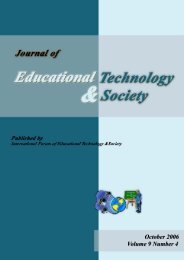THE HISTORY OF TEACHERS’ UNIONS IN ONTARIO
THE HISTORY OF TEACHERS’ UNIONS IN ONTARIO
THE HISTORY OF TEACHERS’ UNIONS IN ONTARIO
Create successful ePaper yourself
Turn your PDF publications into a flip-book with our unique Google optimized e-Paper software.
17day, grievance procedures, just cause and human rights clauses, leave plans, and muchmore.” 55According to Edna Parker:We began to receive training in Collective Bargaining. We were being taught how to negotiateCollective Agreements. Our FWTAO hired staff to train us in the art of negotiating. We attendedconferences and workshops. “FW” sent staff into the field to assist us right in our own backyard.These wonderful women would attend our planning meetings and help us draft our agreements aswe prepared to meet with the Board. It was a whole new world. I must say I didn’t see this newthrust in collective bargaining as a threat to our professional development of past years, but ratherviewed it as an extension of our empowerment. 56For most teachers across Ontario the passing of Bill 100 was seen as amonumental historical occasion that resulted in success for teachers of the present andfuture; however, it is important to note that not all teachers believed that strike action waskey to success in negotiations but that it was in taking away this right that left teachersfeeling disempowered. This feeling ultimately led to conflict and disagreement thatresulted in the teacher walkouts of the 1970s. Edna Parker comments:I never felt strike action for a teacher was a good or viable way to carry on collective bargaining.But, to take away the right to strike seemed to be the wrong way to go. It created feelings ofoppression among the teachers. It implied teachers could not be trusted to bargain in good faith.It gave unlimited power to some and no power to others. In collective bargaining the balance ofpower is between the employer (who holds to purse strings) and the employee (who holds the rightto strike). When this balance is taken away the employee feels disenfranchised.Until the passing of Bill 100, teachers’ futures and working conditions lay in the hands ofthe Ontario government as Ontario Premiers and the Ministry of Education attempted tocontrol teachers’ rights within the teaching profession. According to Hanson, “After Bill100, teachers had the right to name and enforce a variety of demands and no longer hadto rely on moral suasion to convince recalcitrant boards of education of the rightness oftheir position.” 5755 B. Richter, “It’s Elementary: A brief history of Ontario’s public elementary teachers and their federation(Part 3: Early 1945 to 1980),” Elementary Teachers’ Federation of Ontario, February 2007, accessedOctober 28, 2012, http://www.etfo.ca/SiteCollectionDocuments/About%20ETFO%20Documents/ETFO%20History%20Documents/history-pt3.pdf.56 E. Parker, interviewed by Jennifer Parker, Midland, ON., (October 17, 2012).57 Hanson, “Achieving the Right to Strike,” 124.












